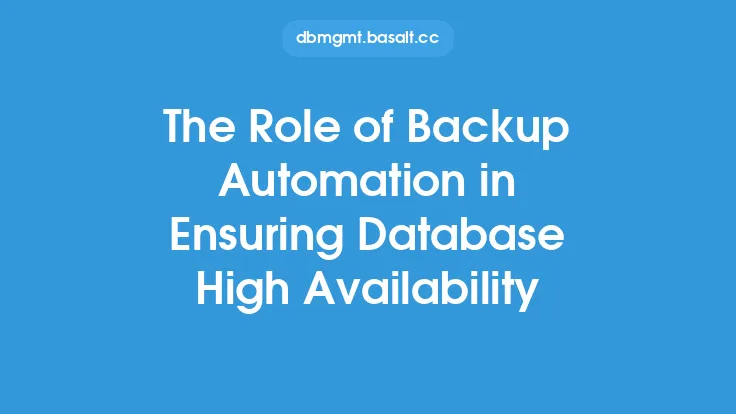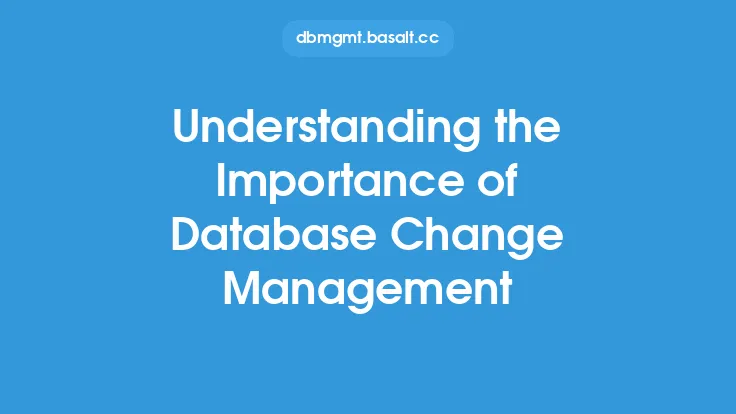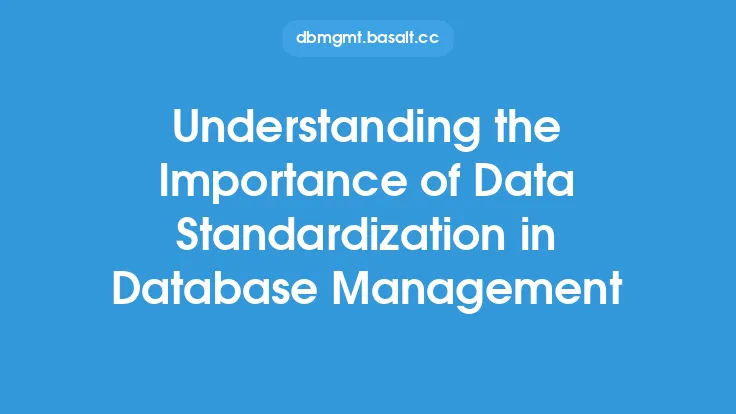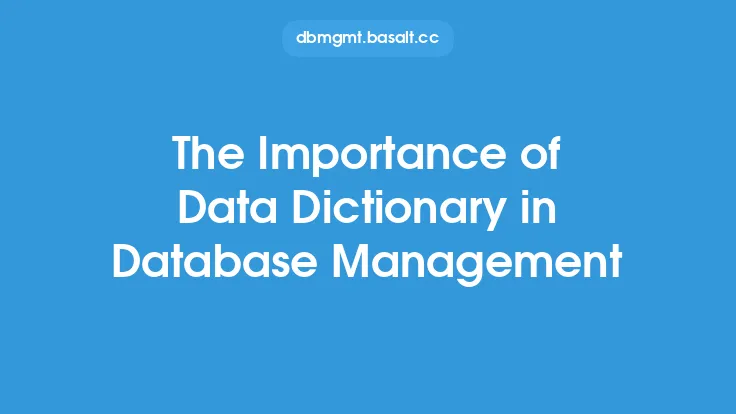Database change management is a critical process that ensures the integrity, security, and performance of databases. It involves a series of steps that help database administrators to identify, assess, approve, implement, and verify changes to the database. One of the key aspects of database change management is automation, which plays a vital role in streamlining and optimizing the process. In this article, we will delve into the role of automation in database change management, its benefits, and how it can be implemented.
Introduction to Automation in Database Change Management
Automation in database change management refers to the use of software tools and scripts to automate repetitive and mundane tasks, such as backups, testing, and deployment of changes. Automation helps to reduce the risk of human error, increases efficiency, and improves the overall quality of the database change management process. By automating tasks, database administrators can focus on more strategic and high-value tasks, such as performance tuning, security, and data modeling.
Benefits of Automation in Database Change Management
The benefits of automation in database change management are numerous. Some of the most significant advantages include:
- Reduced risk of human error: Automation helps to minimize the risk of human error, which is a common cause of database downtime and data corruption.
- Increased efficiency: Automation streamlines the database change management process, reducing the time and effort required to implement changes.
- Improved quality: Automation ensures that changes are implemented consistently and accurately, improving the overall quality of the database.
- Faster deployment: Automation enables faster deployment of changes, which is critical in today's fast-paced business environment.
- Better auditing and compliance: Automation provides a clear audit trail, making it easier to track changes and ensure compliance with regulatory requirements.
Automation Tools and Techniques
There are several automation tools and techniques that can be used in database change management. Some of the most popular tools include:
- Database management systems (DBMS) with built-in automation features, such as Oracle's Enterprise Manager and Microsoft's SQL Server Management Studio.
- Third-party automation tools, such as Redgate's SQL Source Control and Apex's SQL Automation Studio.
- Scripting languages, such as PowerShell and Python, which can be used to automate tasks and integrate with other tools and systems.
- Continuous integration and continuous deployment (CI/CD) tools, such as Jenkins and GitLab CI/CD, which can be used to automate the build, test, and deployment of database changes.
Implementing Automation in Database Change Management
Implementing automation in database change management requires careful planning and execution. Some of the key steps include:
- Identifying automation opportunities: Database administrators should identify tasks and processes that can be automated, such as backups, testing, and deployment of changes.
- Selecting automation tools: Database administrators should select automation tools that meet their needs and integrate with their existing systems and processes.
- Developing automation scripts: Database administrators should develop automation scripts that can be used to automate tasks and integrate with other tools and systems.
- Testing and validating automation: Database administrators should test and validate automation scripts to ensure that they work correctly and do not introduce errors or downtime.
- Monitoring and maintaining automation: Database administrators should monitor and maintain automation scripts to ensure that they continue to work correctly and do not introduce errors or downtime.
Best Practices for Automation in Database Change Management
There are several best practices that database administrators should follow when implementing automation in database change management. Some of the most important best practices include:
- Documenting automation scripts: Database administrators should document automation scripts to ensure that they can be understood and maintained by others.
- Testing automation scripts: Database administrators should test automation scripts thoroughly to ensure that they work correctly and do not introduce errors or downtime.
- Validating automation scripts: Database administrators should validate automation scripts to ensure that they meet the required standards and regulations.
- Monitoring automation scripts: Database administrators should monitor automation scripts to ensure that they continue to work correctly and do not introduce errors or downtime.
- Continuously improving automation: Database administrators should continuously improve automation scripts and processes to ensure that they remain effective and efficient.
Common Challenges and Limitations
While automation can bring many benefits to database change management, there are also some common challenges and limitations that database administrators should be aware of. Some of the most significant challenges and limitations include:
- Initial investment: Implementing automation in database change management requires an initial investment of time and resources.
- Complexity: Automation can add complexity to the database change management process, particularly if multiple tools and systems are used.
- Maintenance: Automation scripts and tools require ongoing maintenance to ensure that they continue to work correctly and do not introduce errors or downtime.
- Security: Automation can introduce security risks if not implemented correctly, such as the use of insecure protocols or the storage of sensitive data in plain text.
Future of Automation in Database Change Management
The future of automation in database change management is exciting and rapidly evolving. Some of the most significant trends and developments include:
- Artificial intelligence (AI) and machine learning (ML): AI and ML are being used to automate more complex tasks, such as performance tuning and security monitoring.
- Cloud-based automation: Cloud-based automation tools and platforms are becoming increasingly popular, offering greater flexibility and scalability.
- DevOps and CI/CD: DevOps and CI/CD are being used to automate the build, test, and deployment of database changes, improving efficiency and reducing downtime.
- Automation of data governance: Automation is being used to govern data quality, security, and compliance, ensuring that data is accurate, secure, and compliant with regulatory requirements.
Conclusion
In conclusion, automation plays a critical role in database change management, streamlining and optimizing the process, reducing the risk of human error, and improving efficiency and quality. By implementing automation tools and techniques, database administrators can focus on more strategic and high-value tasks, such as performance tuning, security, and data modeling. While there are some common challenges and limitations to automation, the benefits far outweigh the costs, and the future of automation in database change management is exciting and rapidly evolving.





